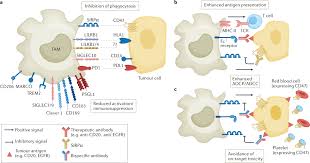Understanding Macrophages: The Key to Optimizing Biotechnologies and Immunotherapy

Macrophage cells serve as the immune system's frontline defenders, swiftly responding to foreign invaders and helping the body discern friend from foe. However, these critical immune responders can mistakenly identify beneficial biotechnologies as threats. If biotechnological devices are not crafted from the appropriate materials or designed with the right mechanical forces, they can trigger an adverse immune response, leading to inflammation, scar tissue formation, or device failure.
The question arises: What constitutes the right material or mechanical force? In a recent meta-analysis co-led by Dr. Abigail Clevenger, a biomedical engineering graduate student at Texas A&M University, researchers stress the importance of context. Dr. Shreya Raghavan, a co-author and assistant professor in biomedical engineering, explains, "Not any one force has the same effect on macrophages throughout the body. For instance, macrophages in the lungs, which experience inflation and deflation, are adapted to those mechanical forces. In contrast, macrophages in the uterus or gut will have different adaptations."
Clevenger, now a postdoctoral fellow, collaborated on this study with Dr. Aakanksha Jha from the University of Maryland. The article, published in *Trends in Biotechnology*, emphasizes the necessity of comprehending macrophage behavior to potentially pave the way for enhanced biotechnologies and targeted immunotherapy treatments.
Raghavan notes that when designing immunotherapy for conditions like colorectal cancer, one cannot merely create a solution in a lab dish devoid of mechanical considerations. "Mechanics influence how macrophages behave. Your design solutions must recognize that these cells are mechanosensitive. Failing to do so risks the chance that macrophages, which can aid in device functionality, may mistakenly perceive harmful tumors as allies, allowing them to thrive," she warns.
The review meticulously summarizes significant research advancements regarding the interactions between biotechnologies and macrophages over the past four years. Raghavan emphasizes the remarkable progress made: "Just five years ago, there was a substantial knowledge gap. Now, with integrated tools from biomedical engineering to molecular and computational biology, we have an abundance of data to analyze. It's beautiful."
On a personal note, Raghavan shares her experience with a continuous glucose monitor, which she replaces every two weeks due to the immune system's reaction to the foreign materials affecting its readings. She hopes the insights gained from this review can guide her lab in refining medical devices like glucose monitors to improve immune responses.
"It's not a one-size-fits-all situation; context matters. Yet, that’s the power and beauty of engineering. We can dissect complex problems, study their fundamental components, and then reconstruct them with greater sophistication," Raghavan concludes.
Story Source:
Materials provided by Texas A&M University. The original text of this story is licensed under a Creative Commons License. Note: Content may be edited for style and length.
Journal Reference:
- Abigail J. Clevenger, Aakanksha Jha, Erika Moore, Shreya A. Raghavan. Manipulating immune activity of macrophages: a materials and mechanics perspective. Trends in Biotechnology, 2024; DOI: 10.1016/j.tibtech.2024.07.009

0 Comments